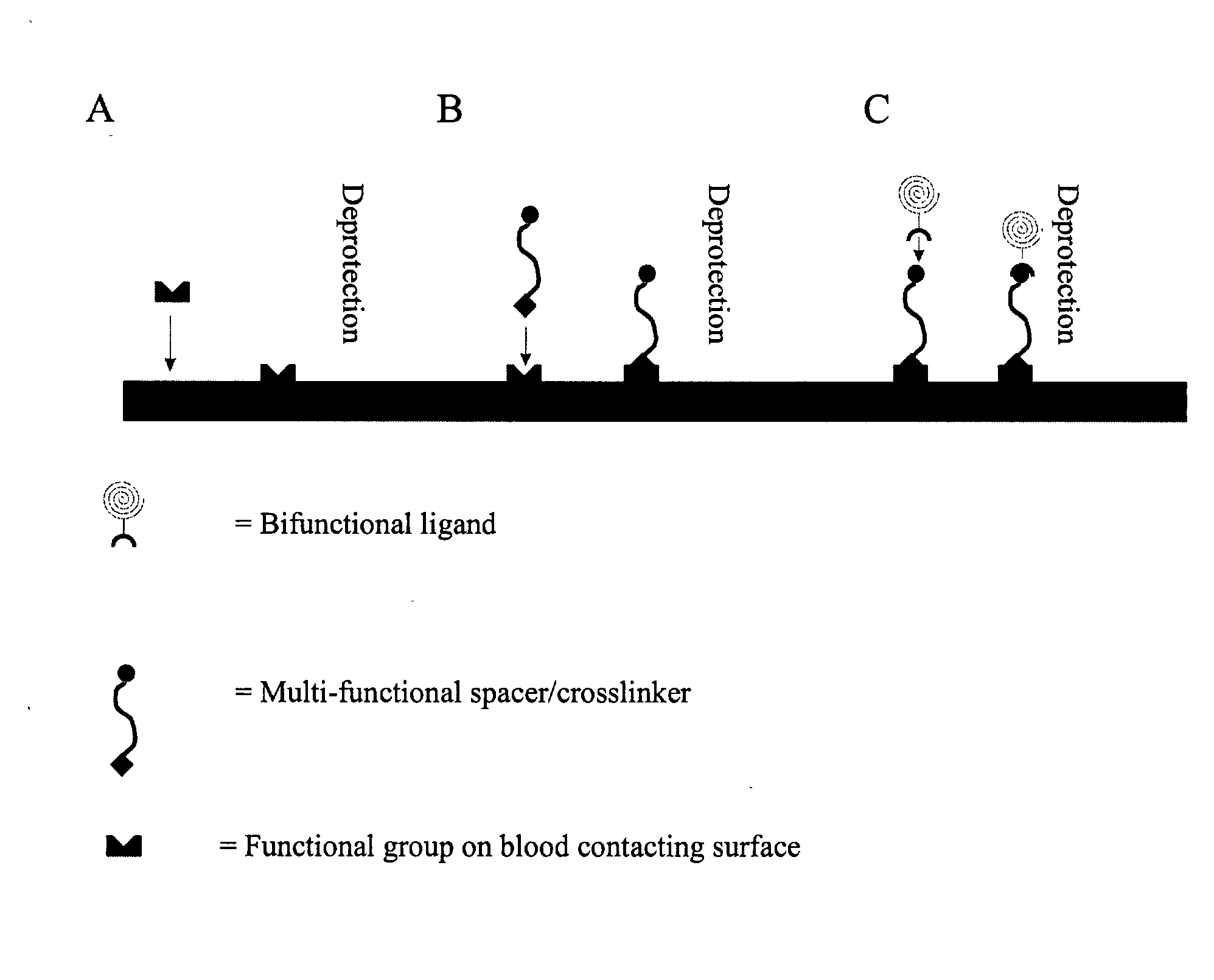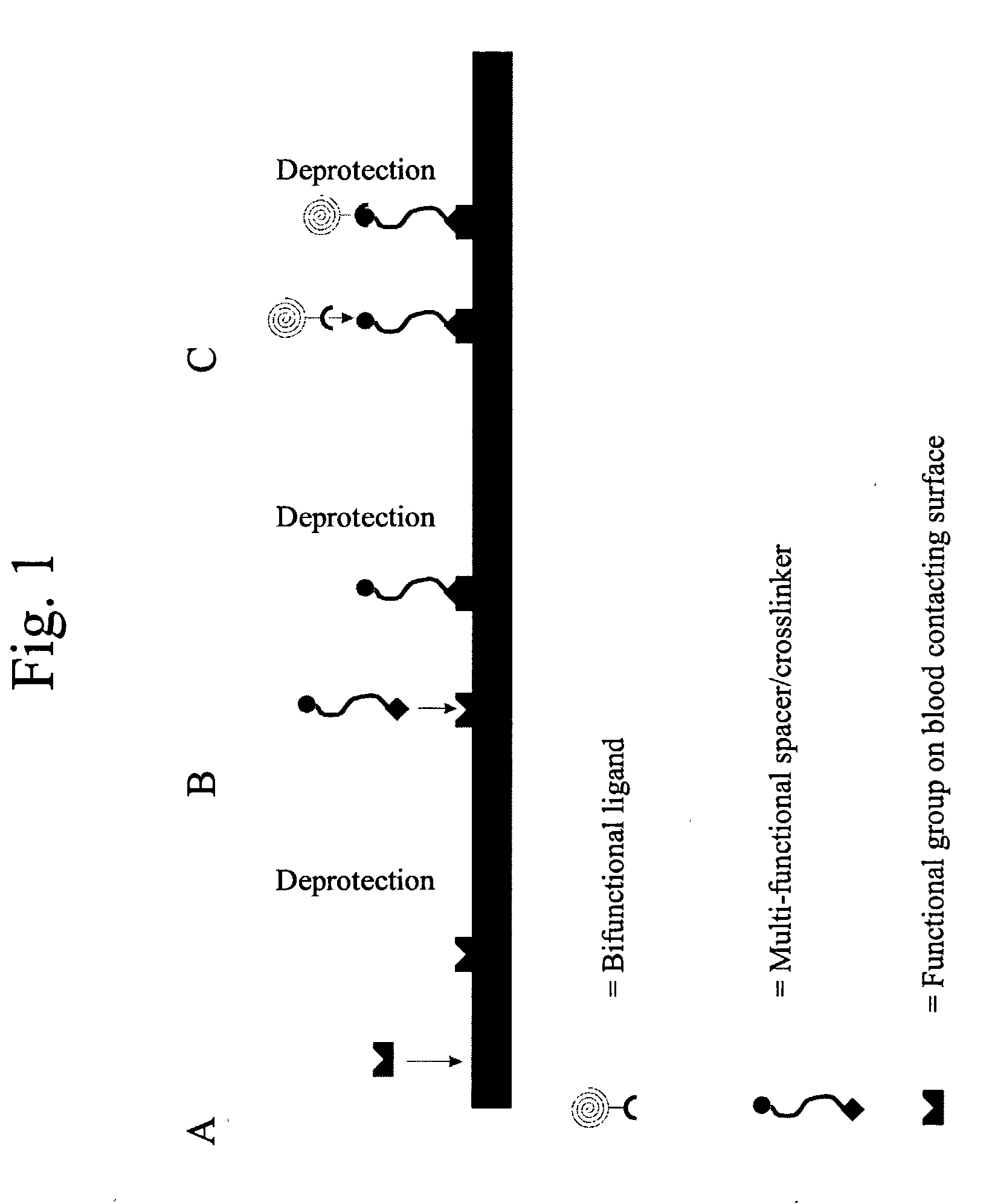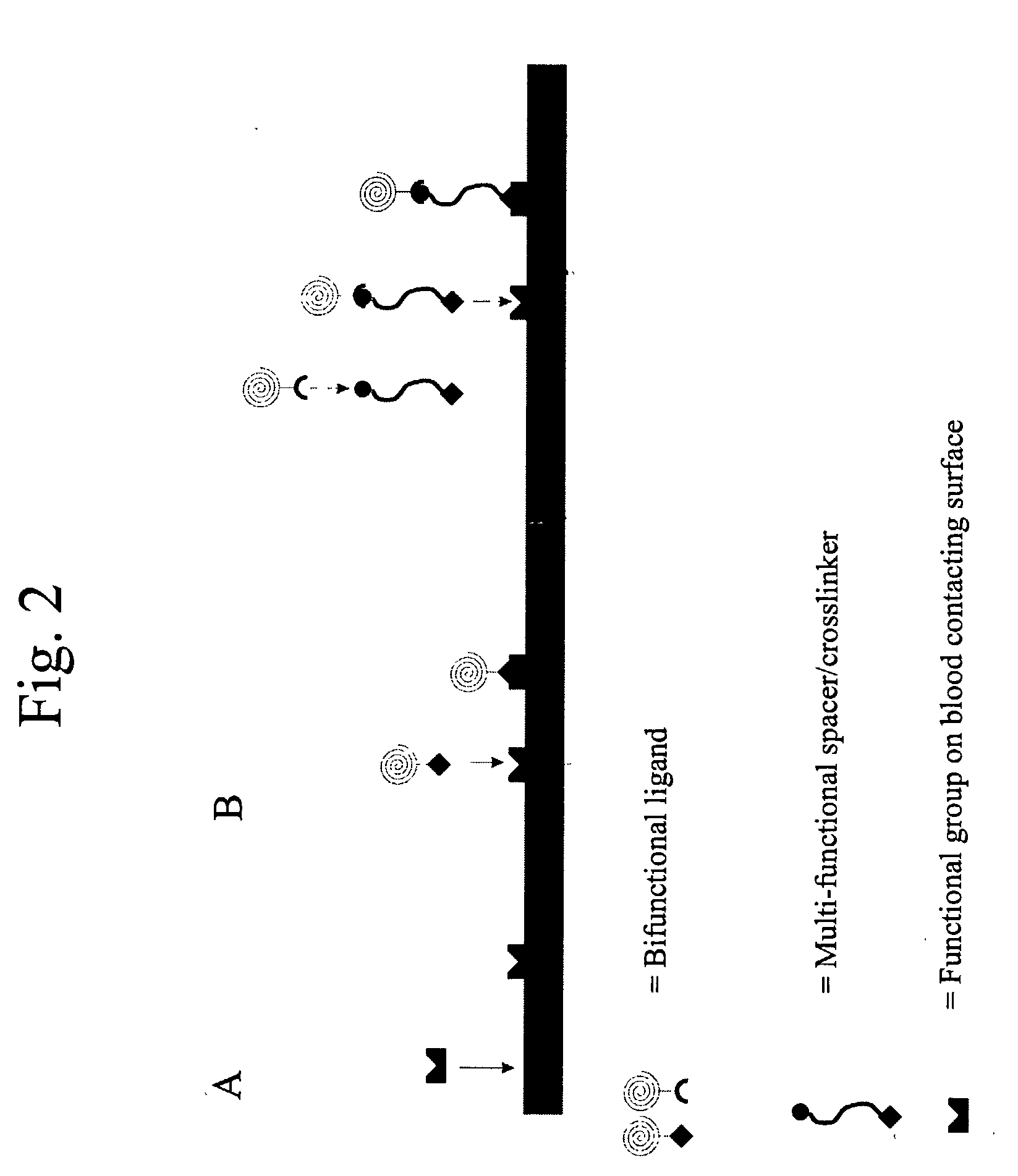Methods and device compositions for the recruitment of cells to blood contacting surfaces in vivo
- Summary
- Abstract
- Description
- Claims
- Application Information
AI Technical Summary
Benefits of technology
Problems solved by technology
Method used
Image
Examples
example 1
Recruitment of Endothelial Progenitor Cells to a Blood Contacting Surface In Vivo by Ligand Interaction
[0160] As an exemplary method for the recruitment of circulating progenitor cells, e.g. endothelial progenitor cells, to a prosthesis surface via magnetic interaction, details of endothelial progenitor cell recruitment to a stent surface are provided. Antibodies to the CD34 receptor found on circulating progenitor cells, or alternatively to the CD133 receptor, are immobilized on the surface of a nitinol stent. When progenitor cells carrying the CD34 membrane receptor (or the CD133 receptor) come into contact with the stent surface, the antibody binds its respective receptor, thereby recruiting the cell to the stent.
[0161] In order to immobilize the antibodies to the stent surface, first, a carboxyl terminated polyethylene glycol spacer is conjugated to the nitinol by gamma irradiation. After cleaning the nitinol in a 1% sodium dodecylsulfate solution and drying the nitinol surface,...
example 2
Recruitment of Endothelial Progenitor Cells to a Blood Contacting Surface of a Prosthesis via Magnetic Interaction In Vivo
[0162] As an exemplary method for the recruitment of circulating progenitor cells, e.g. endothelial progenitor cells, to a prosthesis surface via magnetic interaction, details of endothelial progenitor cell recruitment to the lumen surface of a synthetic vascular graft are provided. A vascular ePTFE graft is modified by replacing ring segments of the vascular graft by samarium cobalt rings, which are gold coated and magnetized to saturation in an annular fashion. Immediately prior to implantation of the graft prosthesis, the recipient is administered 200 nm ferrite particles which are encapsulated in a crosslinked gelatin matrix and present CD34 antibodies at their surface. CD34 antibodies are conjugated to the surface of these encapsulated particles through the crosslinking agent ethyl-dimethylaminopropyl carbodiimide (EDC). This conjugation takes place at 25C i...
example 3
Recruitment of Surface Modified Cells to a Blood Contacting Surface
[0165] As an exemplary method for the recruitment of surface modified cells to a cellularized heart valve prosthesis surface via receptor-ligand interaction, details of the recruitment of surface modified bone marrow cells to a prosthesis surface are provided.
[0166] Bone marrow cells are harvested from the bone marrow by punctation of the bone, or by aspirating bone marrow from a dissected bone with a syringe during surgery. Bone marrow cells are purified by density gradient centrifugation in Ficoll of density 1.077 at 400 g for 30 minutes. Bone marrow cells are modified at their surface through conjugation of hydroxysuccinimide-poly ethyleneglycol-biotin of molecular weight 3400 to amine groups of cell membrane proteins. Conjugation is carried out in a protein-free buffer of pH 8.5, i.e. a 150 mM carbonate-bicarbonate buffer, containing 2 mg / ml of the biotinylated polymer. Cells are incubated in this solution for 20...
PUM
| Property | Measurement | Unit |
|---|---|---|
| Time | aaaaa | aaaaa |
| Time | aaaaa | aaaaa |
| Time | aaaaa | aaaaa |
Abstract
Description
Claims
Application Information
 Login to View More
Login to View More - R&D
- Intellectual Property
- Life Sciences
- Materials
- Tech Scout
- Unparalleled Data Quality
- Higher Quality Content
- 60% Fewer Hallucinations
Browse by: Latest US Patents, China's latest patents, Technical Efficacy Thesaurus, Application Domain, Technology Topic, Popular Technical Reports.
© 2025 PatSnap. All rights reserved.Legal|Privacy policy|Modern Slavery Act Transparency Statement|Sitemap|About US| Contact US: help@patsnap.com



